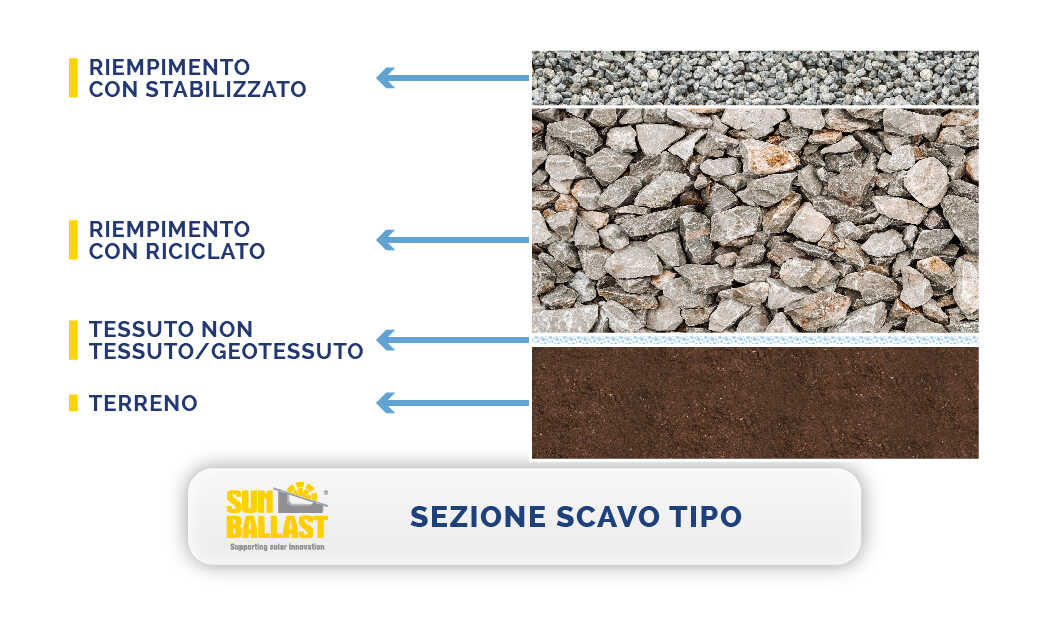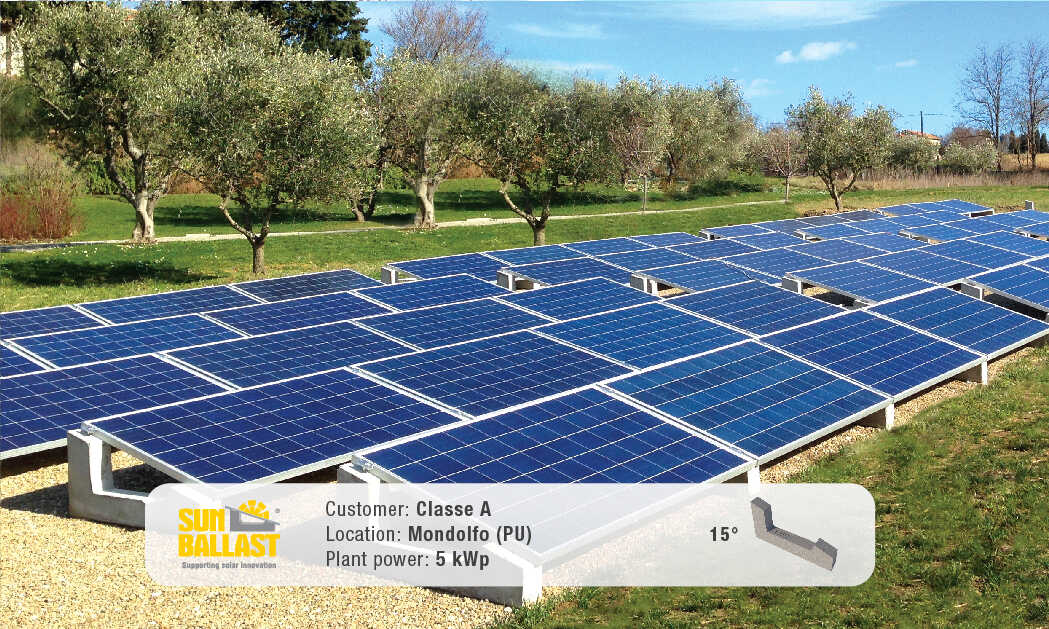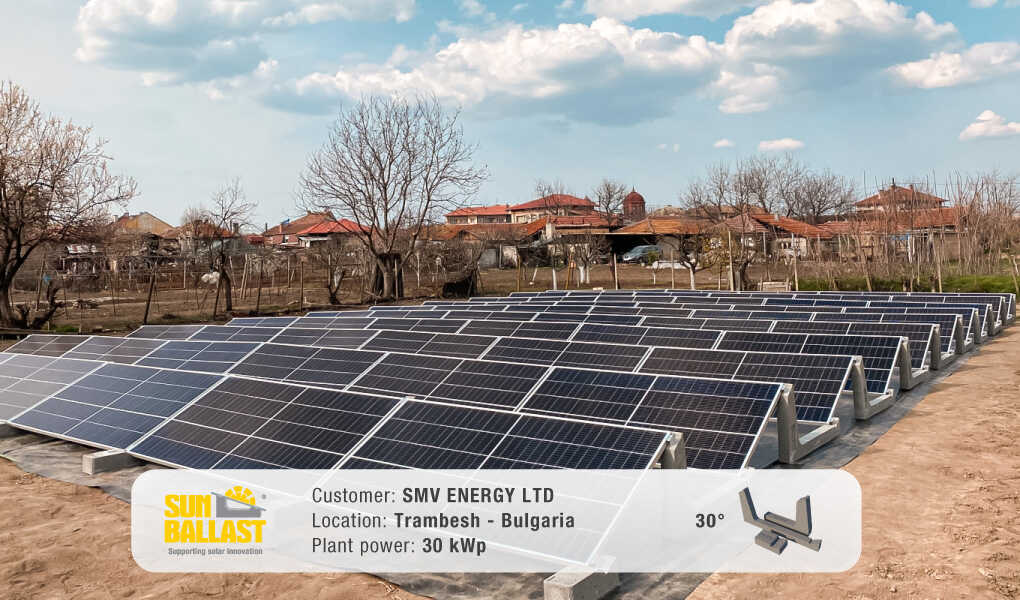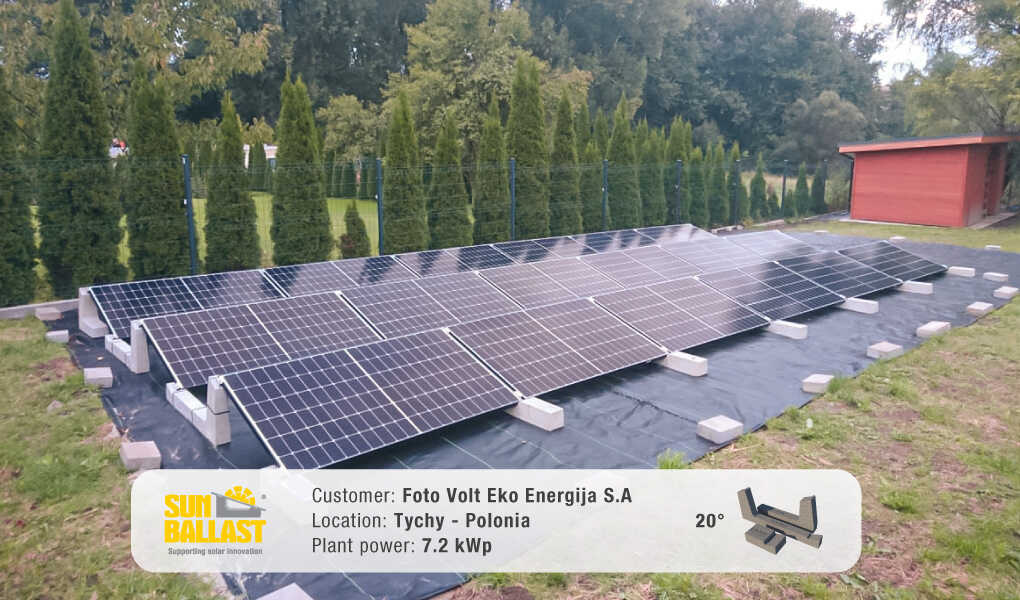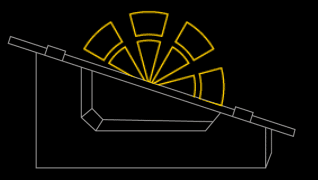The sun on the ground
Ground installation of photovoltaic panels is becoming more popular: let’s explore how best to create them
The surfaces change, but with Sun Ballast’s expertise and structures, the results are always up to code.
An increasing number of requests are coming in for ground-mounted photovoltaic systems.
At first glance, installing a system on this particular type of surface may seem more complicated than installations on the sheathing or gravel roofs that usually cover the flat roofs of industrial warehouses or city buildings, but Sun Ballast’s know-how and innovations make the difference here as well.
Let’s explore the basic steps for setting up a ground-mounted system of solar panels in the best way possible.
1) Clearing the land: excavation or turf removal?
Excavation and turf removal are two ways of levelling the ground to prepare it for the next steps of the process.
The difference between the two is a matter of depth.
Excavation involves the removal of a substantial amount of soil, up to a maximum of 20/30 cm, and the removal of shrubs and vegetation.
Turf removal, on the other hand, deals with a much more superficial level of soil, and is therefore recommended only for smaller installations.
2) Laying the non-woven fabric: the right material in the right place
The essential characteristic of non-woven fabric, exactly as the name suggests, is a lack of weft. Instead, the fibres are distributed randomly, allowing the fabric to not fray when cut and not rot in contact with the ground.
Use of this type of sheet fabric is crucial to avoid, or rather to slow as much as possible, the growth of vegetation that might hinder the productivity of the solar panels.
3) Filling with recycled material: the first layer
Recycled material in this case is defined as waste material from construction and other processes. Its characteristics make it perfect for creating an initial fill to replace the soil removed by excavation.
4) Filling with stabilised material: the final layer, in your choice of size and colour
Stabilised material is the last layer of preparation before setup of the photovoltaic system. Significantly less coarse than recycled material, this has more aesthetic appeal and can be made in various colours and sizes.
From preparation to installation: Sun Ballast has all the solutions
After preparing the soil so that natural movements will not cause it to undergo major changes and damage over time, it is time to proceed with the installation.
Choosing the right ballast is a crucial step in getting the best possible performance on this type of surface.
Sun Ballast offers an extremely wide range of solar panel support inclinations (from 0° to 35°), including for ground-mounted systems, with different solutions that can meet all customers’ needs.
But what type of ballast is best? And what is the correct inclination to choose?
Contrary to common thinking, it is not necessary to install structures with a particularly high inclination. However, the height of the ballast from the ground is a fundamental requirement. An elevation at the front of the ballast, in fact, may be a feature to look for, especially since it prevents even minimal vegetation growth from hindering panel operation.
As ever, Sun Ballast technical service can identify the ideal solution after assessing the specific characteristics of the installation area and the client’s needs, and can select the best available ballast from the range.
Unparalleled experience and variety of products on offer are once again the winning factors.
Even on the ground, Sun Ballast is the most convenient choice
So, let’s add it all up. The steps listed so far are part of the extra costs to be added to those strictly related to the implementation of the photovoltaic system.
This could suggest that the implementation of a system with Sun Ballast products is more expensive than the same implementation done with traditional aluminium systems.
All things considered, however, this is not the case.
Until recently, the realization of a concrete plant could be more expensive, but today – with a staggering increase in the prices of aluminium components and practically zero growth in the costs of cement – the realization of a photovoltaic plant with concrete structures is much more economical compared to one with traditional aluminium structures. And this calculation also includes all the work dedicated to preparing the soil.
That makes Sun Ballast mathematically the best choice, even for ground installations.


